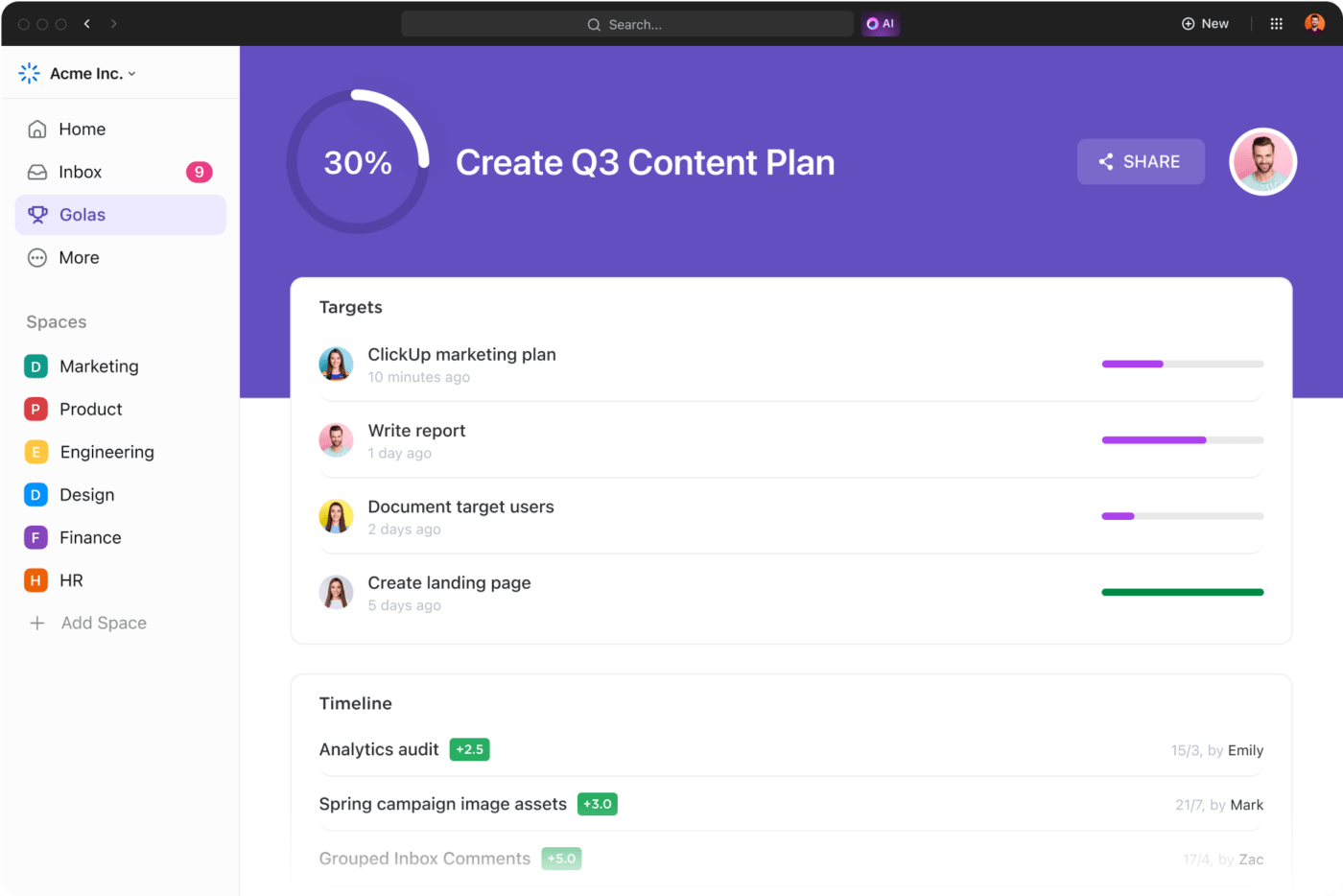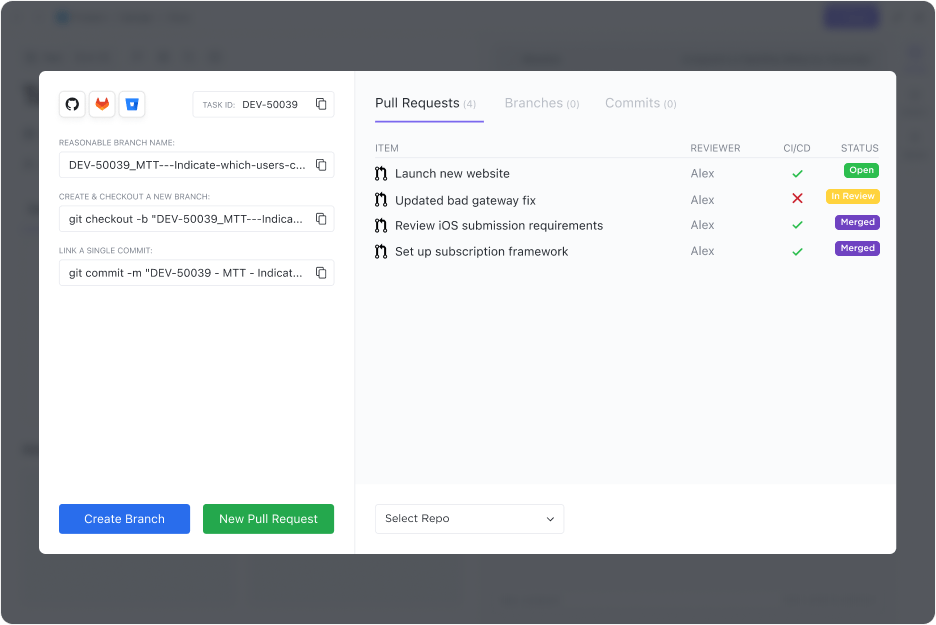إدارة الفريق عن بُعد ليست بالأمر الجديد على فرق التطوير. لم يعد المطورون بحاجة إلى الجلوس بجانب بعضهم البعض لإنجاز العمل. ففرق تطوير البرمجيات عن بُعد قادرة بشكل كبير ليس فقط على أن تكون منتجة فحسب، بل تعمل بفعالية أكبر من فريق العمل داخل المكتب.
في هذا الدليل حول إدارة فريق تطوير البرمجيات عن بُعد، سنلقي نظرة فاحصة على إيجابيات وسلبيات إدارة فريق العمل عن بُعد، وكيفية بناء وإدارة فريقك، وأفضل نهج يجب اتباعه عندما يتعلق الأمر بالتواصل والأمان. 💻
التأثير المتنامي للعمل عن بُعد على تطوير البرمجيات
بينما كانت فرق تطوير البرمجيات مبنية بالفعل للعمل عن بُعد بنجاح، إلا أن جائحة كوفيد-19 سرّعت من وتيرة هذا التحول. ومنذ ذلك الحين، حافظت الفرق المختلطة وفرق العمل عن بُعد على شعبيتها لأسباب عديدة وجيهة.
مزايا وتحديات العمل عن بُعد في تطوير البرمجيات
يقدم العمل عن بُعد الكثير من الإيجابيات لكل من الشركات والموظفين، خاصة عندما تفكر في ثروة المواهب المتاحة في جميع أنحاء العالم.
تتضمن بعض المزايا الرئيسية للعمل عن بُعد في تطوير البرمجيات ما يلي:
- القدرة على توظيف أفضل المواهب، بغض النظر عن البلد أو المنطقة الزمنية التي يعملون فيها
- تغطية نطاق أوسع من الوقت وجداول العمل، للحصول على تغطية أكثر اكتمالاً لدعم المنتج
- اعتماد الاتصال غير المتزامن أولاً بشكل افتراضي، مما يتيح المزيد من الوقت للعمل العميق 💡
- الحفاظ على توازن أفضل بين العمل والحياة الشخصية
إلا أن فرق تطوير البرمجيات عن بُعد لا تخلو من العيوب. فيما يلي بعض التحديات التي قد يواجهها قادة الفرق:
- عدم القدرة على الاطمئنان على أعضاء الفريق وجهاً لوجه أو في الوقت الحقيقي، مقابل عدم التزامن
- المعاناة في جدولة الاجتماعات والتحديثات المباشرة لجميع الموظفين التي تناسب الكثير من المناطق الزمنية المختلفة 🌍
- صعوبة التأكد من إعداد التكنولوجيا ومساحة العمل الخاصة بالجميع وصيانتها بشكل صحيح
- صعوبة تنظيم فعاليات وأنشطة بناء الفريق، خاصةً إذا كان هناك مزيج من أعضاء الفريق الداخليين والبعيدين
دور تطوير البرمجيات الرشيقة و DevOps و Scrum في التطوير عن بُعد
سوف يزدهر فريق التطوير عن بُعد في الإعداد الموزع بفضل أدوات ومنهجيات إدارة المشاريع التي قد يتبناها. وتجد الشركات الناشئة وشركات تطوير البرمجيات التي تتبنى منهجيات Agile أو Scrum أو DevOps أن أساليب العمل هذه تتماشى بشكل طبيعي مع نموذج العمل الهجين أو عن بُعد.
تقسم منهجية Agile (بما في ذلك Scrum) العمل إلى سباقات سريعة، وتطلب من الفرق تصميم وتطوير واختبار ونشر المنتجات والخدمات بشكل سريع. وتتضمن هذه السباقات السريعة اجتماعات يومية (أو أسبوعية) حيث فريق رشيق يقدم الأعضاء تحديثات ويحاولون تخفيف العوائق. كل هذا ليس ممكناً فقط في بيئة العمل عن بُعد، بل غالباً ما يكون أسهل بكثير - بفضل قلة الملهيات والاجتماعات الشخصية.

قم بإنشاء قائمة مهام لتنظيم جميع اجتماعاتك ومراسم العدو السريع في ClickUp
تتمتع الفرق التي تتبنى DevOps إما بشكل مستقل أو إلى جانب أجايل بفرص أكبر لكسر الحواجز والتحرك بشكل أسرع، وذلك بفضل التكامل الأصغر حجماً بين فريقي التطوير والعمليات. 🔗
بناء فرق هندسة البرمجيات وإدارتها عن بُعد
العمل عن بُعد هو اتجاه سيبقى، لذلك لم يكن هناك وقت أفضل من الآن لتعلم كيفية إدارة فريق تطوير البرمجيات عن بُعد. إليك أفضل نصائحنا حول بناء فريقك وإدارته ورعايته للعمل على أعلى مستوى.
1. وظف أعضاء الفريق المناسبين عن بعد 🤝
تبدأ قيادة أفضل فريق عمل بتوظيف الأشخاص المناسبين في المقام الأول. إذا كان لديك مدخلات في عملية التوظيف، فاجعلها أولوية لضمان أنها تعمل لصالحك لتقديم أفضل المرشحين في فئتهم.
عند توظيف مطورين عن بُعد من أجل فريقك الافتراضي اعمل مع قسم الموارد البشرية والتوظيف لديك لإرشادهم إلى ما تبحث عنه. اكتب وصفاً وظيفياً وحدد مهام المقابلات التي تتماشى مع احتياجاتك. اقترح قيمًا مهمة، مثل العمل الجماعي أو المرونة، وابحث عن طرق للكشف عنها خلال عملية المقابلة.
إذا كنت لا تحصل على مرشحين جيدين، حاول فهم أين تكمن المشكلة. ضع في اعتبارك ما إذا كان الراتب مناسباً، خاصةً إذا كنت تحاول جذب مواهب عالية الجودة من المناطق ذات التكلفة العالية. تأكّد من أن قوائم الوظائف الخاصة بك تغطي جميع المزايا الرئيسية، واذكر ثقافة الشركة وامنح أعضاء الفريق المحتملين فرصة لتخيل أنفسهم كجزء من فريقك.
2. حسّن عملية التأهيل الخاصة بك 🎉
لا تنتهي الرحلة بمجرد العثور على أعضاء فريق التطوير المناسبين. قم بتحسين عملية التهيئة الخاصة بك حتى يحصل الوافدون الجدد على مقدمة مناسبة عن هويتك وما تقوم به وكيفية عملك.
حتى لو كان شخص ما يعمل عن بُعد منذ فترة، فمن المحتمل أن تعمل شركتك بشكل مختلف عن شركته السابقة. قم بإعداد رحلة تأهيلية يمكنك تخصيصها لكل موظف جديد تعكس خبرته وتلبي متطلباتك وتسهل عليه بلطف الاندماج في مؤسستك.
أثناء إدارة فرق العمل عن بُعد، قدم فرصاً لجدولة اجتماعات عبر الإنترنت مع أعضاء الفريق أو زملاء العمل في الأقسام الأخرى. قم بدعوة الموظفين الجدد إلى اجتماعات جميع الموظفين الجدد والفعاليات التي تركز على الثقافة. تأكد من حصولهم على كل ما يحتاجون إليه لتحقيق أفضل بداية ممكنة.
3. ضع أهدافاً واقعية 🎯
يساعد وجود هدف للعمل من أجل تحقيقه على تحفيز أعضاء فريقك ويضع توقعات واضحة بشأن ما يتعين عليهم القيام به بعد ذلك. احرص على وضع أهداف واضحة مع تحديد مواعيد نهائية ومعالم واقعية لزيادة التحفيز الذاتي ودفع مشروعك إلى الأمام.

وضع أهداف قابلة للقياس للمهام والمشاريع مع التقدم التلقائي لتحقيق الأهداف بفعالية أكبر مع جداول زمنية محددة وأهداف قابلة للقياس الكمي
للحصول على طريقة أفضل لتحديد ومراقبة التقدم المحرز مقابل الأهداف، استخدم أهداف ClickUp . تم تصميم ClickUp Goals بحيث يسهل على فريق التطوير لديك تحقيق أهدافهم من خلال جداول زمنية واضحة ومؤشرات أداء رئيسية وأهداف قابلة للقياس وتتبع التقدم التلقائي.
ضع أهدافًا سريعة بشكل أسرع من خلال تحويل مهامك النشطة إلى أهداف قابلة للتحقيق. تتبع تقدمك بطريقة منطقية بالنسبة لفريقك، سواء باستخدام علامات الصواب/الخطأ أو القيم الرقمية. شاهد كل هدف في مكان واحد، أو ألقِ نظرة خاطفة على المجلدات المخصصة للتركيز فقط على الأهداف التي تريد رؤيتها.
4. استخدم الأدوات الأفضل في فئتها ⚒️
لا تكافح فرق تطوير البرمجيات عالية الأداء عن بُعد لإنجاز المهام باستخدام أدوات برمجية قديمة لا ترقى إلى مستوى المهمة. وبدلاً من ذلك، يستخدمون أدوات برمجية هي الأفضل في فئتها مثل منصة ClickUp لإدارة المشاريع .
تحتوي ClickUp على كل ما يحتاجه فريقك الموزع للعمل بكفاءة وإنتاجية ونجاح. فهو يجمع بين برنامج إدارة المشاريع والأدوات المستهدفة من أجل تطوير البرمجيات والتعاون، و العمل عن بُعد .

استخدم المطالبات باستخدام أداة ClickUp AI لإنشاء مستندات متطلبات المنتج (PDRs) بسرعة في لمح البصر.
تتمتع فرق البرمجيات بكل ما تحتاجه عندما يتعلق الأمر بالوظائف داخل ClickUp. يمكنك تبسيط دورة حياة التطوير بأكملها من البداية إلى النهاية باستخدام تدفقات العمل الآلية وتراكمات السرعة وتتبع المشكلات وخرائط الطريق ولوحات المعلومات الرشيقة. يمكنك استخدام ClickUp AI لإنشاء أفكار المنتجات وخرائط الطريق بشكل أسرع.

تصفح التطبيقات والتكاملات المتاحة في ClickUp لإنجاز العمل في منصة مركزية واحدة
لا يحتاج فريقك إلى تشتيت انتباههم عبر أدوات متعددة، وذلك بفضل تكامل ClickUp مع أكثر من 1,000 أداة أخرى. اجمع كل شيء معًا داخل أفضل أداة لتطوير البرمجيات للحصول على سير عمل أكثر تركيزًا يمكّن فريقك من الأداء على أعلى مستوى.
5. تحقق بانتظام 💬
غالبًا ما يعتقد الناس أن العاملين عن بُعد يُتركون لأجهزتهم ويعملون بشكل مستقل. في حين أن هذا قد يكون صحيحًا، إلا أن أفضل قادة فرق العمل عن بُعد يحاولون الاطمئنان على أعضاء فريقهم بانتظام.
تساعد عمليات تسجيل الوصول المنتظمة أعضاء فريقك على الشعور بمزيد من الترابط وهي جزء ضروري من تطوير البرمجيات - خاصة إذا كنت تستخدم إطار عمل Agile. تسمح لك الاجتماعات المنتظمة، مثل الاجتماعات اليومية، بالتعامل مع المشاكل قبل أن تصبح كبيرة.

اجمع اتصالات الفريق معًا في مساحة واحدة مع ClickUp Chat، وشارك التحديثات، واربط الموارد، وتعاون دون عناء.
وبعيداً عن الاهتمامات العملية لتطوير المنتجات والبرمجيات، فإن الاطمئنان بانتظام أمر لا بد منه للقادة الجيدين. خصص الوقت الكافي لجدولة اجتماعات فردية مع أعضاء الفريق للسؤال عن أحوالهم، ومعرفة ما إذا كان هناك أي شيء يمكنك المساعدة فيه، ومناقشة خطط نموهم - حتى تتمكن من الحصول على تعليقات قيمة ودعم أهدافهم في التطوير الوظيفي.
6. استخدم إطار عمل لإدارة المشاريع 🧰
يعد البدء من الصفر في نهجك لإدارة المشاريع فكرة سيئة بشكل عام. في حين أنه يمكنك تحقيق سير عمل مخصص للغاية، إلا أن اعتماد منهجية مجربة ومختبرة وتخصيصها حسب احتياجاتك أمر أكثر منطقية.
تعمل معظم فرق تطوير البرمجيات بمنهجية Agile، حيث أن المنهجية منطقية - خاصة للفرق المختلطة أو البعيدة. يسمح لك إطار العمل هذا بالشحن بسرعة، والاختبار بكفاءة، والتقدم بسرعة نحو هدفك النهائي. كما أنه يتضمن أيضاً الكثير من عمليات الوقوف والتواصل، وهو أمر ضروري لأي فريق تطوير برمجيات يعمل عن بُعد.

لا تبدأ عملك من الصفر - اختر خيارات معدة مسبقًا من مركز القوالب أو أنشئ قالبك الخاص الذي يمكن لفريقك استخدامه
تم تصميم ClickUp باستخدام الهندسة الرشيقة الفرق في الاعتبار. لن تحتاج إلى قضاء أسابيع في إنشاء مهام سير العمل الخاصة بك من الصفر داخل أداة إدارة المشروع (على الرغم من أنه يمكنك ذلك إذا أردت). بدلاً من ذلك يمكنك استخدام قوالب تطوير البرمجيات و القوالب الهندسية لتكون جاهزة للعمل في لحظات.
7. غرس ثقافة الشركة الصحيحة ✨
لا توجد أفضل فرق البرمجيات عن بُعد بالصدفة. فهي مدعومة بثقافة الشركة القوية والمرحبة التي تعزز القيم وأفضل الممارسات وسير العمل والصفات التي تتماشى مع أهداف الفريق واحتياجاته.
إن وجود الثقافة الصحيحة للشركة والفريق أمر لا بد منه في أي بيئة عمل عن بُعد. وغالباً ما يجتمع التوازن الصحي بين روح الفريق والتقييمات الصادقة في أفضل طريقة لخلق بيئة يشعر فيها الأشخاص بالترحيب والدعم والتمكين والتحدي للقيام بأفضل ما لديهم من عمل.
ليس لدى القادة الأفراد دائماً الكثير من المساهمات في ثقافة الشركة، ولكن تأكد من استخدام أي تأثير لديك لإجراء تغييرات تفيد فريقك. ادفع من أجل التواصل المفتوح، واتخاذ القرارات بشكل أسرع، واعتماد تطبيقات بناء الفريق ، وأي ميزات أخرى تسهل على فريقك البرمجي عن بُعد العمل بشكل مريح.
التواصل والتعاون في فرق العمل عن بُعد
لا يمكنك قيادة فريق قوي وفعال بدون تواصل مقصود. يعرف أفضل القادة ما الذي يجب التواصل معه ومتى وكم مرة، لذا فهم يحققون التوازن الصحيح بين الإفراط في التواصل وعدمه.
الإفراط في التواصل مقابل التواصل الواضح: إيجاد التوازن
التواصل الواضح والفعال أمر ضروري عند قيادة فريق تطوير البرمجيات عن بُعد. يتجه بعض القادة إلى اتجاه واحد أكثر من اللازم، مما يؤدي إلى إغراق أعضاء الفريق الحاليين والجدد بالكثير من التفاصيل. وهذا ما يُعرف بالإفراط في التواصل. 🗨️
للحصول على التوازن الصحيح، يجب على قادة فريق التطوير:
- تعزيز التواصل المفتوح، ومشاركة جميع التحديثات ذات الصلة في قنوات الفريق بدلاً من الرسائل الخاصة
- وضع توجيهات بشأن ما هو جيدتواصل الفريق ما يبدو عليه
- تجنب الإدارة التفصيلية ومكِّن أعضاء الفريق من معالجة المشاكل بشكل مستقل مع الدعم
- اختيار منصة مؤتمرات فيديو مثل Zoom أو Google Meet، واستخدامها باستمرار
- وضع توقعات واضحة حول كيفية التواصل بفعالية عند مناقشة وإدارة طلبات السحب في أدوات التطوير مثل GitHub
- استخدم التواصل غير المتزامن لتقديم الاتصالات بشكل واضح وموجز، دون أن يضطر الأشخاص إلى انتظار المزيد من التفاصيل
- تقديمأدوات التعاون عن بُعد وأدوات الاتصال التي تكمل أسلوب عمل الفريق وتفضيلاته، مثل Slack أو Microsoft Teams
- استخدام الملاحظات لتحسين العمليات الحالية وسير العمل وعادات التواصل

تجنب التنقل بين المنصات وإنشاء فرع أو طلب سحب جديد ضمن مهمة باستخدام تكامل Github
لن تحصل دائمًا على التوازن الصحيح تمامًا، ولكن الأمر كله يتعلق بتبني المبادئ وإظهارها يوميًا. قدم إرشادات واضحة، وحدد النغمة، واعمل مع فريقك لتطوير نهج جماعي للتواصل يكون منطقيًا للجميع.
الأمان والامتثال في تطوير البرمجيات عن بُعد
يعد الأمن والامتثال من الأولويات القصوى لفرق تطوير البرمجيات، ويبدو التركيز أكثر أهمية إذا كنت تدير فريق عمل عن بُعد. 🔐
مع وجود فريق عمل داخلي، من الأسهل على قسم تكنولوجيا المعلومات لديك مراقبة وحماية البرمجيات من سوء الاستخدام أو عدم الامتثال العرضي عن كثب. إذا قام برنامجك بتنفيذ إصلاح أو تصحيح خطأ أو تصحيح هام، يمكن لفريق تكنولوجيا المعلومات أن يتأكد بنفسه من تحديث جميع الأجهزة.
في الإعداد عن بُعد، لن يكون لديك إمكانية الوصول الفعلي إلى جميع الأجهزة أو البرامج التي يستخدمها فريقك. لكن ما يمكنك القيام به هو تأمين الأجهزة عن بُعد، مما يمنحك طريقة لتكون استباقيًا في ضمان بيئة آمنة ومأمونة والعمل كضمانة في حالة حدوث أي خطأ.
يجب على فرق العمل عن بُعد أن تأخذ بعين الاعتبار أيضاً مخاوف الامتثال الأخرى، خاصةً إذا كان التوظيف في جميع أنحاء العالم. وفي حين يجب أن تتولى فرق الموارد البشرية والفرق القانونية معظم المسؤولية في هذا الشأن، إلا أن قادة الفرق الاستباقية سيرغبون في معرفة ما يمكنهم وما لا يمكنهم فعله فيما يتعلق بالاستعانة بمصادر خارجية للمواهب، وإدارة السلوك، والاستغناء عن أعضاء الفريق.
قم بتمكين فريقك للعمل بأفضل ما لديهم
سيكون من المفيد دائماً معرفة كيفية إدارة فريق تطوير البرمجيات عن بُعد، خاصةً أن الفرق المختلطة وفرق العمل عن بُعد موجودة لتبقى. استخدم هذا الدليل لدعم نموك كمدير وقائد حتى تتمكن من دعم وتمكين فريق التطوير لديك للقيام بما يقومون به على أفضل وجه.
إذا كنت تبحث عن منصة تسمح لك بإدارة المشاريع وسير عمل تطوير البرمجيات ومصممة مع وضع فرق العمل الرشيقة في الاعتبار, جرّب ClickUp مجانًا اليوم . لا شيء يضاهيه لإدارة فريق البرمجيات. 🤖

